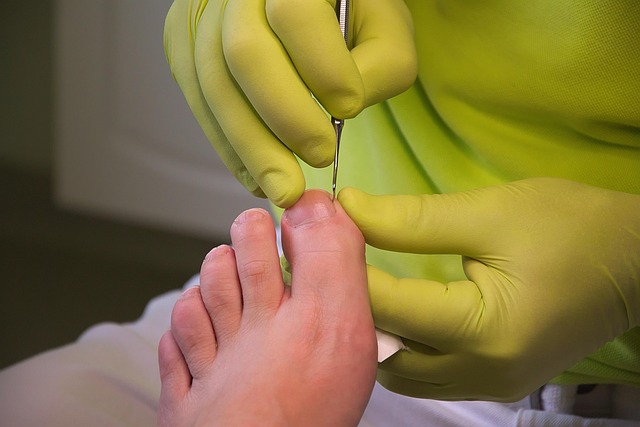Understanding The Causes Of Toenail Fungus & Prevention Tips
Toenail fungus, also known as onychomycosis, is a common condition that affects millions of people worldwide. This pesky infection can cause discoloration, thickening, and brittleness of the nails, leading to discomfort and embarrassment. In this article, we'll explore the causes of toenail fungus, how to identify it, and effective prevention tips to keep your feet healthy and fungus-free.

What are the main causes of toenail fungus?
Toenail fungus is primarily caused by a group of fungi called dermatophytes, which thrive in warm, moist environments. Several factors can increase your risk of developing this condition:
-
Prolonged exposure to moisture: Wearing damp shoes or socks for extended periods creates an ideal environment for fungal growth.
-
Poor foot hygiene: Not washing and drying your feet regularly can allow fungi to flourish.
-
Weakened immune system: Certain medical conditions or medications can make you more susceptible to fungal infections.
-
Trauma to the nail: Injuries or repetitive stress on the toenails can create openings for fungi to enter.
-
Age: As we get older, our nails become more brittle and prone to infections.
Understanding these causes can help you take proactive steps to prevent toenail fungus from developing.
How can you identify toenail fungus?
Recognizing the signs of toenail fungus early can lead to more effective treatment. Here are some common symptoms to watch out for:
-
Discoloration: Infected nails may turn yellow, brown, or white.
-
Thickening: The nail may become thicker and more difficult to trim.
-
Brittleness: Infected nails often become brittle and may crumble or break easily.
-
Distorted shape: The nail may change shape or separate from the nail bed.
-
Foul odor: In some cases, there may be an unpleasant smell associated with the infected nail.
If you notice any of these symptoms, it’s essential to consult a healthcare professional for proper diagnosis and treatment.
What are effective prevention tips for toenail fungus?
Preventing toenail fungus is often easier than treating it. Here are some practical tips to keep your feet fungus-free:
-
Keep your feet clean and dry: Wash your feet daily and dry them thoroughly, especially between the toes.
-
Wear breathable footwear: Choose shoes made of materials that allow air circulation and absorb moisture.
-
Use antifungal powders or sprays: Apply these products to your feet and inside your shoes to create an inhospitable environment for fungi.
-
Trim your nails regularly: Keep your toenails short and straight to prevent debris from accumulating underneath.
-
Avoid walking barefoot in public areas: Wear sandals or shower shoes in locker rooms, public pools, and other communal spaces.
-
Don’t share personal items: Avoid sharing nail clippers, towels, or shoes with others to prevent the spread of fungal infections.
By incorporating these prevention tips into your daily routine, you can significantly reduce your risk of developing toenail fungus.
How does toenail fungus look like in its various stages?
Toenail fungus can present differently depending on the stage of infection:
-
Early stage: You may notice small white or yellow spots on the nail.
-
Intermediate stage: The nail becomes thicker, more discolored, and may start to lift from the nail bed.
-
Advanced stage: The nail may become severely distorted, crumbly, and separate from the nail bed entirely.
-
Severe cases: In rare instances, the infection can spread beyond the nail, causing pain and difficulty walking.
Understanding these stages can help you identify the progression of the infection and seek timely treatment.
Can toenail fungus be managed by natural remedies?
While medical treatments are often necessary for severe cases, some natural remedies may help manage mild toenail fungus:
-
Tea tree oil: Known for its antifungal properties, it can be applied directly to the affected nail.
-
Apple cider vinegar: Soaking your feet in a mixture of vinegar and water may help create an acidic environment that inhibits fungal growth.
-
Oregano oil: This essential oil has antifungal and antibacterial properties that may help combat the infection.
-
Garlic: Crushed garlic applied to the affected area may have antifungal effects.
-
Dietary changes: Consuming probiotic-rich foods and reducing sugar intake may support your body’s natural defenses against fungal infections.
It’s important to note that while these natural remedies may offer some benefits, they are not a substitute for professional medical advice and treatment. Always consult with a healthcare provider before trying any new treatment methods.
Toenail fungus can be a persistent and challenging condition to manage. By understanding its causes, recognizing the symptoms, and implementing effective prevention strategies, you can significantly reduce your risk of developing this common foot ailment. If you suspect you have toenail fungus, don’t hesitate to seek professional help for proper diagnosis and treatment.
This article is for informational purposes only and should not be considered medical advice. Please consult a qualified healthcare professional for personalized guidance and treatment.




